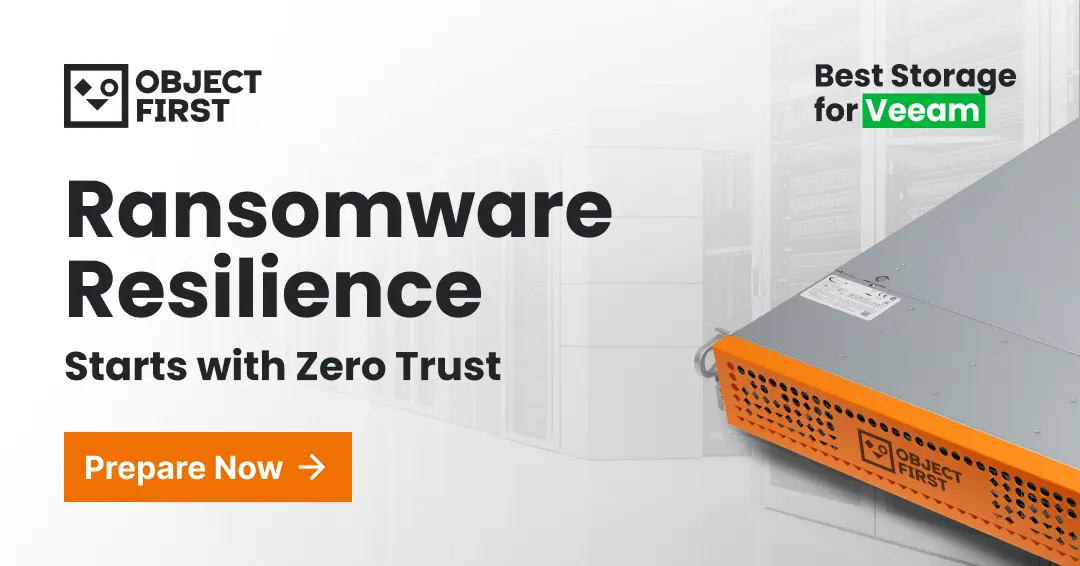Ransomware Detection: Techniques and Best Practices to Detect an Attack
In 2024, the average cost of a data breach soared to $4.88 million, making early ransomware detection and response non-negotiable parts of data security.
The math is simple: the faster you identify a ransomware attack, the better you can safeguard your information, reduce damage, and avoid devastating financial losses.
Learn how spotting ransomware quickly can be the difference between a minor disruption and a major disaster.
What Is Ransomware Detection?
Ransomware Detection is a proactive approach that helps identify the presence of malicious software designed to encrypt or block access to critical data.
With 75% of companies hit by ransomware last year, early threat detection is essential. It involves using a combination of tools, techniques, and monitoring systems to spot early signs of ransomware activity before it can spread throughout an organization’s network.
The Importance of Early Ransomware Detection
With downtime costing businesses an average of $9,000 per minute*, every second an attack goes undetected can add up to significant losses.
Early ransomware detection allows organizations to catch the malware before it has time to encrypt their files, and the earlier it's detected, the quicker IT teams can respond, isolating and containing the cyber threat.
This prompt action:
- Prevents long periods of operational disruption.
- Safeguards your business's credibility and trust.
- Protects critical files from encryption or deletion.
- Minimizes costs tied to halted production and lost revenue.
- Reduces ransomware recovery services or ransom payments.
7 Common Signs of Ransomware Attacks
Ransomware can encrypt nearly 100,000 files in less than 45 minutes*. Spotting the warning indicators before the malware fully takes hold can prevent severe damage and safeguard your data before it’s too late.
Here are the seven signs to watch for:
1. Prolonged file access or system performance: Ransomware consumes system resources while encrypting files, causing noticeable slowdowns.
2. Files with strange or unrecognized extensions: Encrypted files may suddenly have unfamiliar extensions, indicating they’ve been compromised.
3. Unexplained file renaming: Ransomware often renames files during encryption, making them unusable without a decryption key.
4. Frequent system crashes or application failures: Malware activity can destabilize your system, causing crashes and unexpected software failures.
5. Locked out of user accounts: Sudden loss of access to user accounts may indicate that ransomware has targeted and taken control of critical system credentials.
6. Pop-up ransom messages or warnings: Cybercriminals often display ransom notes on infected systems, demanding payment in exchange for file decryption.
7. Unusual network traffic spikes: A surge in outgoing network traffic could indicate ransomware is communicating with its command-and-control server.
Ransomware Detection Techniques
With the right detection methods in place, you can detect Ransomware before it wreaks havoc. Find below the four key techniques on how to detect Ransomware and protect your systems from catastrophic damage.
Signature-Based Detection
Signature-based detection scans for known malware signatures, unique patterns, or digital "fingerprints" left by ransomware. Security tools compare files against a vast signature database, flagging and blocking matches before they cause harm.
While this method is effective against previously identified Ransomware, it falls short when new or modified strains emerge. Because Ransomware constantly evolves, relying solely on signature-based detection may leave organizations vulnerable to zero-day attacks.
Behavior-Based Detection
Behavior-based detection doesn't depend on known signatures. Instead, it monitors for unusual behaviors in the system that indicate a ransomware attack is underway. This could include abnormal file encryption, unexpected changes to file extensions, or unauthorized access to sensitive directories.
By focusing on how Ransomware acts rather than how it looks, this technique excels at catching new or modified threats that signature-based systems might miss. However, constant monitoring is required to identify abnormal behaviors quickly.
Detection by Abnormal Traffic
Detecting through abnormal traffic monitoring focuses on spotting unusual patterns in network activity. Ransomware often communicates with external servers or spreads across networks, creating spikes in traffic, especially during encryption or data exfiltration attempts.
This technique includes unexpected connections to suspicious IP addresses, abnormal file transfers, or unusually high bandwidth usage. It is essential because it allows early detection even before files are encrypted, minimizing downtime and financial loss.
Deception-Based Detection
Deception-based detection uses decoys, such as fake files or systems, to lure Ransomware into revealing itself.
These traps are carefully placed to appear like valuable targets, tricking the malware into interacting with them. Once Ransomware engages with these decoys, it triggers an alert, allowing IT teams to respond before the real damage is done.
It is highly effective because it relies on something other than prior knowledge of Ransomware. By baiting the attack, deception-based detection uncovers both known and unknown ransomware strains, giving organizations an extra layer of data protection.
Best Practices to Prevent Ransom Payments
A strong ransomware defense is the best offense against malicious encryption and the finest method not to pay the ransom.
Below are proven strategies for preventing ransomware attacks and protecting your data.
- Perform regular backups: Ensure that all critical data is backed up frequently. Regular ransomware backup protection minimizes the risk of irreversible data loss, allowing for quicker disaster recovery without paying a ransom.
- Keep your software updated: Regularly updating operating systems, applications, and security tools helps close known vulnerabilities that ransomware exploits to gain access to systems.
- Train your employees: Human error is a leading cause of ransomware breaches. Conduct regular training sessions to educate employees on phishing scams, safe email practices, and recognizing suspicious links or attachments.
- Make your backups immutable: Using immutable backups prevents ransomware from altering or deleting backup data. Immutable backups ensure that even if ransomware infiltrates the system, your data backups remain safe and recoverable.
- Enable multi-factor authentication (MFA): MFA adds an extra layer of security by requiring users to provide two or more verification factors, making it more difficult for attackers to gain unauthorized access to systems.
- Implement Zero Trust Architecture: Enforce strict access controls to limit access to sensitive systems and data. Under Zero Trust, no one is trusted by default, and access is granted only on a need-to-know basis, which significantly reduces ransomware risks.
- Segment your network: Network segmentation helps contain ransomware by limiting its ability to spread across different parts of the system. The damage remains contained by isolating critical data and applications, even if one segment is compromised.
- Run regular security audits: Regularly reviewing your security posture can help identify weaknesses in your defenses. Security audits ensure that all preventative measures are up-to-date and effective in countering the latest ransomware threats.
Ootbi by Object First: When Malware Detection Isn’t Enough
With Ransomware now targeting backup data, even advanced detection methods struggle to keep up, making immutable backups your best line of defense.
Ransomware-proof and immutable out-of-the-box, the Ootbi appliance by Object First delivers secure, simple, and powerful on-premises backup storage for Veeam customers.
Ootbi is built on the latest Zero Trust Data Resilience principles and delivers S3 native immutable object storage designed and optimized for unbeatable Veeam backup and recovery performance.
Request a demo and learn why Ootbi is the Best Storage for Veeam.
FAQ
What Are the Latest Trends in Ransomware Detection Technology?
The latest trends include behavior-based detection, which monitors unusual activity, and abnormal traffic detection, which spots irregular network patterns. These advanced methods are crucial for identifying new or modified ransomware strains that bypass traditional defenses.
Can Traditional Antivirus Software Detect Ransomware Infection?
Traditional antivirus can detect known ransomware but struggles with newer or evolving threats. For comprehensive ransomware protection, businesses should combine antivirus with more advanced detection techniques, such as behavior-based and traffic monitoring.
How Can Small Businesses Implement Effective Ransomware Detection Without a Large Budget?
Small businesses can use free or low-cost tools that focus on behavior-based detection and regularly monitor network activity. Regular backups, employee training, and maintaining up-to-date security software also help protect against ransomware.


